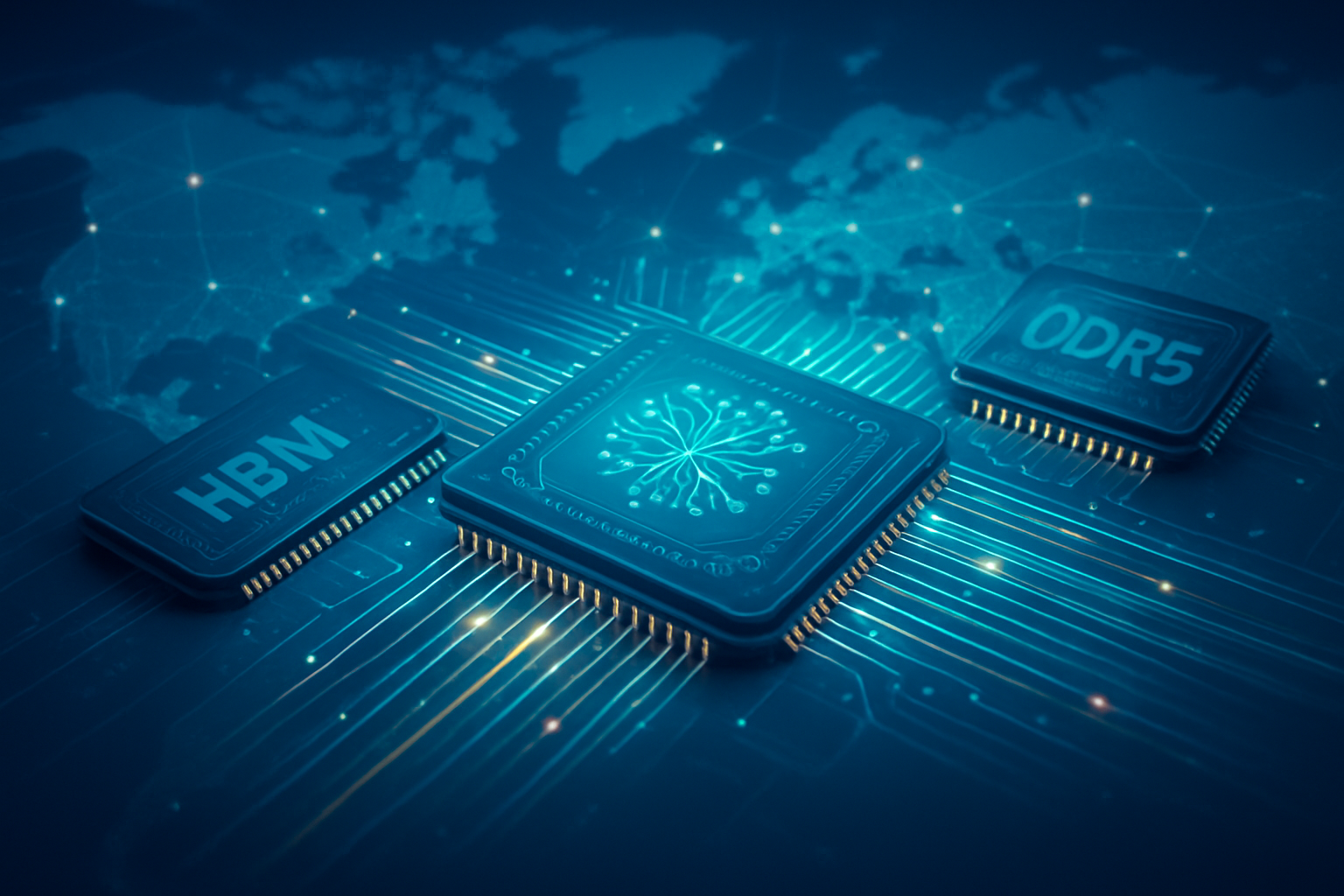Vatican City, November 18, 2025 – In a timely and profound address, Pope Leo XIV, the newly elected Pontiff and first American Pope, has issued a powerful call for the ethical integration of artificial intelligence (AI) within healthcare systems. Speaking just days ago to the International Congress "AI and Medicine: The Challenge of Human Dignity" in Rome, the Pope underscored that while AI offers revolutionary potential for medical advancement, its deployment must be rigorously guided by principles that safeguard human dignity, the sanctity of life, and the indispensable human element of care. His reflections serve as a critical moral compass for a rapidly evolving technological landscape, urging a future where innovation serves humanity, not the other way around.
The Pope's message, delivered between November 10-12, 2025, to an assembly sponsored by the Pontifical Academy for Life and the International Federation of Catholic Medical Associations, marks a significant moment in the global discourse on AI ethics. He asserted that human dignity and moral considerations must be paramount, stressing that every individual possesses an "ontological dignity" regardless of their health status. This pronouncement firmly positions the Vatican at the forefront of advocating for a human-first approach to AI development and deployment, particularly in sensitive sectors like healthcare. The immediate significance lies in its potential to influence policy, research, and corporate strategies, pushing for greater accountability and a values-driven framework in the burgeoning AI health market.
Upholding Humanity: The Pope's Stance on AI's Role and Responsibilities
Pope Leo XIV's detailed reflections delved into the specific technical and ethical considerations surrounding AI in medicine. He articulated a clear vision where AI functions as a complementary tool, designed to enhance human capabilities rather than replace human intelligence, judgment, or the vital human touch in medical care. This nuanced perspective directly addresses growing concerns within the AI research community about the potential for over-reliance on automated systems to erode the crucial patient-provider relationship. The Pope specifically warned against this risk, emphasizing that such a shift could lead to a dehumanization of care, causing individuals to "lose sight of the faces of those around them, forgetting how to recognize and cherish all that is truly human."
Technically, the Pope's stance advocates for AI systems that are transparent, explainable, and accountable, ensuring that human professionals retain ultimate responsibility for treatment decisions. This differs from more aggressive AI integration models that might push for autonomous AI decision-making in complex medical scenarios. His message implicitly calls for advancements in areas like explainable AI (XAI) and human-in-the-loop systems, which allow medical practitioners to understand and override AI recommendations. Initial reactions from the AI research community and industry experts have been largely positive, with many seeing the Pope's intervention as a powerful reinforcement for ethical AI development. Dr. Anya Sharma, a leading AI ethicist at Stanford University, commented, "The Pope's words resonate deeply with the core principles we advocate for: AI as an augmentative force, not a replacement. His emphasis on human dignity provides a much-needed moral anchor in our pursuit of technological progress." This echoes sentiments from various medical AI developers who recognize the necessity of public trust and ethical grounding for widespread adoption.
Implications for AI Companies and the Healthcare Technology Sector
Pope Leo XIV's powerful call for ethical AI in healthcare is set to send ripples through the AI industry, profoundly affecting tech giants, specialized AI companies, and startups alike. Companies that prioritize ethical design, transparency, and robust human oversight in their AI solutions stand to benefit significantly. This includes firms developing explainable AI (XAI) tools, privacy-preserving machine learning techniques, and those investing heavily in user-centric design that keeps medical professionals firmly in the decision-making loop. For instance, companies like Google Health (NASDAQ: GOOGL), Microsoft Healthcare (NASDAQ: MSFT), and IBM Watson Health (NYSE: IBM), which are already major players in the medical AI space, will likely face increased scrutiny and pressure to demonstrate their adherence to these ethical guidelines. Their existing AI products, ranging from diagnostic assistance to personalized treatment recommendations, will need to clearly articulate how they uphold human dignity and support, rather than diminish, the patient-provider relationship.
The competitive landscape will undoubtedly shift. Startups focusing on niche ethical AI solutions, such as those specializing in algorithmic bias detection and mitigation, or platforms designed for collaborative AI-human medical decision-making, could see a surge in demand and investment. Conversely, companies perceived as prioritizing profit over ethical considerations, or those developing "black box" AI systems without clear human oversight, may face reputational damage and slower adoption rates in the healthcare sector. This could disrupt existing product roadmaps, compelling companies to re-evaluate their AI development philosophies and invest more in ethical AI frameworks. The Pope's message also highlights the need for broader collaboration, potentially fostering partnerships between tech companies, medical institutions, and ethical oversight bodies to co-develop AI solutions that meet these stringent moral standards, thereby creating new market opportunities for those who embrace this challenge.
Broader Significance in the AI Landscape and Societal Impact
Pope Leo XIV's intervention fits squarely into the broader global conversation about AI ethics, a trend that has gained significant momentum in recent years. His emphasis on human dignity and the irreplaceable role of human judgment in healthcare aligns with a growing consensus among ethicists, policymakers, and even AI developers that technological advancement must be coupled with robust moral frameworks. This builds upon previous Vatican engagements, including the "Rome Call for AI Ethics" in 2020 and a "Note on the Relationship Between Artificial Intelligence and Human Intelligence" approved by Pope Francis in January 2025, which established principles such as Transparency, Inclusion, Responsibility, Impartiality, Reliability, and Security and Privacy. The Pope's current message serves as a powerful reiteration and specific application of these principles to the highly sensitive domain of healthcare.
The impacts of this pronouncement are far-reaching. It will likely empower patient advocacy groups and medical professionals to demand higher ethical standards from AI developers and healthcare providers. Potential concerns highlighted by the Pope, such as algorithmic bias leading to healthcare inequalities and the risk of a "medicine for the rich" model, underscore the societal stakes involved. His call for guarding against AI determining treatment based on economic metrics is a critical warning against the commodification of care and reinforces the idea that healthcare is a fundamental human right, not a privilege. This intervention compares to previous AI milestones not in terms of technological breakthrough, but as a crucial ethical and philosophical benchmark, reminding the industry that human values must precede technological capabilities. It serves as a moral counterweight to the purely efficiency-driven narratives often associated with AI adoption.
Future Developments and Expert Predictions
In the wake of Pope Leo XIV's definitive call, the healthcare AI landscape is expected to see significant shifts in the near and long term. In the near term, expect an accelerated focus on developing AI solutions that explicitly demonstrate ethical compliance and human oversight. This will likely manifest in increased research and development into explainable AI (XAI), where algorithms can clearly articulate their reasoning to human users, and more robust human-in-the-loop systems that empower medical professionals to maintain ultimate control and judgment. Regulatory bodies, inspired by such high-level ethical pronouncements, may also begin to formulate more stringent guidelines for AI deployment in healthcare, potentially requiring ethical impact assessments as part of the approval process for new medical AI technologies.
On the horizon, potential applications and use cases will likely prioritize augmenting human capabilities rather than replacing them. This could include AI systems that provide advanced diagnostic support, intelligent patient monitoring tools that alert human staff to critical changes, or personalized treatment plan generators that still require final approval and adaptation by human doctors. The challenges that need to be addressed will revolve around standardizing ethical AI development, ensuring equitable access to these advanced technologies across socioeconomic divides, and continuously educating healthcare professionals on how to effectively and ethically integrate AI into their practice. Experts predict that the next phase of AI in healthcare will be defined by a collaborative effort between technologists, ethicists, and medical practitioners, moving towards a model of "responsible AI" that prioritizes patient well-being and human dignity above all else. This push for ethical AI will likely become a competitive differentiator, with companies demonstrating strong ethical frameworks gaining a significant market advantage.
A Moral Imperative for AI in Healthcare: Charting a Human-Centered Future
Pope Leo XIV's recent reflections on the ethical integration of artificial intelligence in healthcare represent a pivotal moment in the ongoing discourse surrounding AI's role in society. The key takeaway is an unequivocal reaffirmation of human dignity as the non-negotiable cornerstone of all technological advancement, especially within the sensitive domain of medicine. His message serves as a powerful reminder that AI, while transformative, must always remain a tool to serve humanity, enhancing care and fostering relationships rather than diminishing them. This assessment places the Pope's address as a significant ethical milestone, providing a moral framework that will guide the development and deployment of AI in healthcare for years to come.
The long-term impact of this pronouncement is likely to be profound, influencing not only technological development but also policy-making, investment strategies, and public perception of AI. It challenges the industry to move beyond purely technical metrics of success and embrace a broader definition that includes ethical responsibility and human flourishing. What to watch for in the coming weeks and months includes how major AI companies and healthcare providers respond to this call, whether new ethical guidelines emerge from international bodies, and how patient advocacy groups leverage this message to demand more human-centered AI solutions. The Vatican's consistent engagement with AI ethics signals a sustained commitment to ensuring that the future of artificial intelligence is one that genuinely uplifts and serves all of humanity.
This content is intended for informational purposes only and represents analysis of current AI developments.
TokenRing AI delivers enterprise-grade solutions for multi-agent AI workflow orchestration, AI-powered development tools, and seamless remote collaboration platforms.
For more information, visit https://www.tokenring.ai/.









